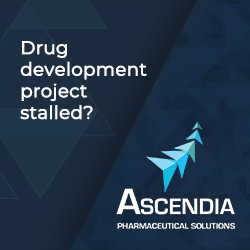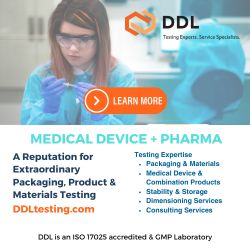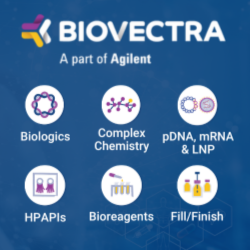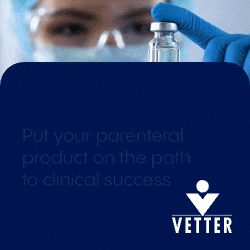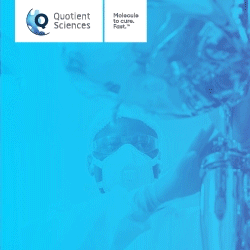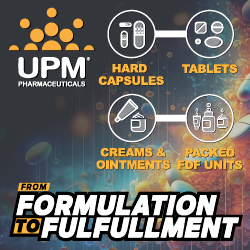Bio Platforms
Invivyd Announces US IND Clearance & Alignment With FDA on Pivotal Clinical Program for a Vaccine-Alternative Antibody to Prevent COVID
Invivyd, Inc. recently announced the US FDA has cleared the company’s Investigational New Drug (IND) application and provided feedback to advance the company’s REVOLUTION clinical…
uniQure’s Gene Therapy for Huntington’s Disease Holds Blockbuster Potential
uniQure recently announced that its novel gene therapy, AMT-130 (ifezuntirgene inilparvovec), demonstrated statistically significant disease slowing in a Huntington’s disease (HD) pivotal trial. The results…
Ovid Announces Positive Topline Results for the Next-Generation GABA-Aminotransferase Inhibitor
Ovid Therapeutics Inc. recently announced positive topline results from its Phase 1 healthy volunteer study evaluating the safety, tolerability, pharmacokinetic (PK) and pharmacodynamic (PD) activity…
Draig Therapeutics Announces US FDA Clearance of IND Application for Phase 2 Study for the Treatment of Major Depressive Disorder
Draig Therapeutics recently announces that it will initiate a Phase 2 study of DT-101, a next-generation AMPA receptor positive allosteric modulator (PAM) for Major Depressive…
Aerska Launches With $21 Million in Financing to Develop RNAi Medicines for Diseases of the Brain
Aerska, a biotechnology company aiming to redefine the treatment of neurological diseases, recently announced it has raised $21 million in seed financing, co-led by Age1,…
RheumaGen Announces Oral Presentation on HLA Gene-Editing Preclinical Data for Lead Autoimmune Disease Program at ACR Convergence 2025
RheumaGen, Inc., a cell and gene therapy company engineering a new class of therapeutics for major autoimmune diseases, today announced that a human leukocyte antigen…
Fortress Biotech & Urica Therapeutics Announce Crystalys Therapeutics’ $205 Million Series A Financing
Urica Therapeutics, Inc., a Fortress Biotech, Inc. subsidiary, recently announced Crystalys Therapeutics, Inc., in which Urica maintains an equity position, closed a $205 million Series…
VERAXA Biotech & Secarna Pharmaceuticals Initiate Antibody Oligonucleotide Conjugate Alliance in Immunology
VERAXA Biotech, an emerging leader in designing novel cancer therapies and proposed de-SPAC acquisition target of Voyager Acquisition Corp. and Secarna Pharmaceuticals GmbH & Co. KG,…
Faeth Therapeutics’ R&D Platform Delivers First Cross-Disease Validation Beyond Oncology
Faeth Therapeutics has launched a new R&D initiative aimed at preserving neurocognitive function in children with tyrosinemia type 1 (TT1), marking the expansion of its platform…
HCW Biologics Participates in Virtual Investor What This Means Segment About its Proprietary T-Cell Engager Program
HCW Biologics Inc. recently announced Peter Rhode, PhD, Chief Scientific Officer and Vice President of Clinical Operations of HCW Biologics, participated in a Virtual Investor…
AIM ImmunoTech Secures Patent Through 2039 for Novel Cancer Therapy
AIM ImmunoTech Inc. recently announced the Japan Patent Office has issued a patent covering the Company’s proprietary use of Ampligen (Rintatolimod) in combination with checkpoint…
Immuneering Announces Extraordinary 86% Overall Survival at 9 Months in First-Line Pancreatic Cancer Patients Treated With Atebimetinib + mGnP
Immuneering Corporation recently announced positive updated survival and safety data from its ongoing Phase 2a trial of atebimetinib (IMM-1-104) in combination with modified gemcitabine/nab-paclitaxel (mGnP)…
Yatiri Bio Receives Grant to Advance Proteomics Interoperability in Cancer Research
Yatiri Bio Inc. recently announced it has received a grant from the Gates Foundation to launch a one-year project, Proteomics Interoperability, aimed at improving how…
Alvotech Announces Marketing Approval of Three New Biosimilars
Alvotech recently announced its commercialization partner in Japan, Fuji Pharma Co., Ltd., has received marketing approval for three new biosimilars from the Japanese Ministry of…
Amphista Therapeutics Discloses First Details of SMARCA2 Degrader Program
Amphista Therapeutics recently disclosed first data on its SMARCA2 program including demonstrating exquisite selectivity of its sequentially bifunctional Targeted Glues for SMARCA2 over the closely…
Osivax Announces First Participant Vaccinated in Phase 2b Trial Evaluating Broad-Spectrum Influenza A Vaccine Candidate
Osivax recently announced the first participant has been vaccinated in its Phase 2b clinical trial (NCT05569239) evaluating OVX836, the company’s broad-spectrum influenza A vaccine candidate.…
FORE Biotherapeutics Presents Phase 1/2a Plixorafenib Data Demonstrating Prolonged Duration of Effect in BRAF Altered Thyroid Cancers
FORE Biotherapeutics recently presented new plixorafenib results from the previously completed Phase 1/2a clinical trial that demonstrate treatment with plixorafenib in patients with BRAF-altered papillary…
Monte Rosa Therapeutics Announces Collaboration With Novartis for Degraders to Treat Immune-Mediated Diseases
Monte Rosa Therapeutics, Inc. recently announced an agreement to collaborate with Novartis to develop novel degraders for immune-mediated diseases. The agreement is the company’s second…
Abzena Enhances AbZelectPRO Cell Line Offering With New GS Knockout Platforms
Abzena, the leading end-to-end integrated CDMO for complex biologics and bioconjugates, announced the expansion of its AbZelectPRO™ cell line development (CLD) platform with the launch…
Department of Defense Awards Grant to Advance Tiziana Life Sciences' Intranasal Anti-CD3 Therapy for Spinal Cord Injury
Tiziana Life Sciences, Ltd. recently announced that the US Department of Defense (DoD) has awarded a research grant to study the use of intranasal anti-CD3…
What are Bio Platforms?
Platforms (or asset-independent technologies to capture all kinds of capabilities that can be leveraged across many different drug candidate assets rather than just discovery tools that the term ‘platform’ immediately brings to mind) are ubiquitous in modern pharma. They are the product of an arms race, to secure access to the best capabilities in key areas.
Platform technologies are considered a valuable tool to improve efficiency and quality in drug product development. The basic idea is that a platform, in combination with a risk-based approach, is the most systematic method to leverage prior knowledge for a given new molecule. Furthermore, such a platform enables a continuous improvement by adding data for every new molecule developed by this approach, increasing the robustness of the platform.
But it has often been said that access to the latest technological platforms to aid efficient drug discovery and development is limited to Big Pharma, which can more easily justify the costs of creating and operating these platforms.
Benefits of Bio Platforms
Platform technologies have the ability to radically improve upon current products and generate completely novel products. In this sense, they open up new arenas for drug discovery and development, potentially increasing the number of therapeutic options for patients. Once a single compound or therapeutic has been generated and demonstrates a clinical benefit in patients, it is more likely this platform technology can successfully be applied to other therapeutic areas, derisking future compounds/products.
Complex drugs by their very nature are challenging and costly to manufacture. This, in turn, translates into higher costs for patients and other payers. In order to provide safe and effective therapies at a reasonable price, it is necessary for the industry to develop manufacturing technologies that reduce costs and provide a consistent product. While the initial investment may be larger, manufacturing costs will be lower over time as the manufacturing process is solidified.
Scale and Investment of Bio Platforms
Despite the initial upfront costs, platform technologies inevitably provide pragmatic solutions to production challenges, while yielding safer and more effective therapeutic products. It has often been said that one of the key features that distinguishes “Big Pharma” from biotech is access to the latest technological platforms to aid efficient drug discovery and development.
These platforms range from vast chemical libraries, ultra-high throughput screening and huge genetic databases in discovery, to predictive toxicology platforms, cutting-edge ‘omics’ and even deep-seated knowledge of particular therapeutic areas in development. All these platforms have two things in common: They can be used on any (or many) development candidate assets, and they cost huge sums to establish in the first place, and in a few cases each time they are used as well. Hence their restriction to the largest pharmaceutical companies (and a few of the so-called “big biotechs” that are, in many ways, indistinguishable from the old-guard pharma).
Only when you have hundreds of active projects can you justify the cost of creating and operating these platforms. Or so the mantra goes. It is access to these platforms that keeps the big companies ahead in the race to discover and develop the best medicines (or at least counterbalance the disadvantages of being large and slow-moving, depending on your point of view). But is that just an assertion? How much evidence is there to support the proposition that the efficiency gains due to these platforms outstrips the cost of creating and maintaining them?
Keeping these technologies “cutting edge” has become so expensive that increasingly we hear pharma companies talking of “pre-competitive” approaches to develop the next generation. A group of companies might develop a platform capability they then share. The principle goal of such initiatives is to access even grander and more expensive tools than individual companies could afford, rather than to dramatically cut costs (although sharing platforms rather than developing the same thing in parallel in each silo should at least keep a lid on rising costs).






